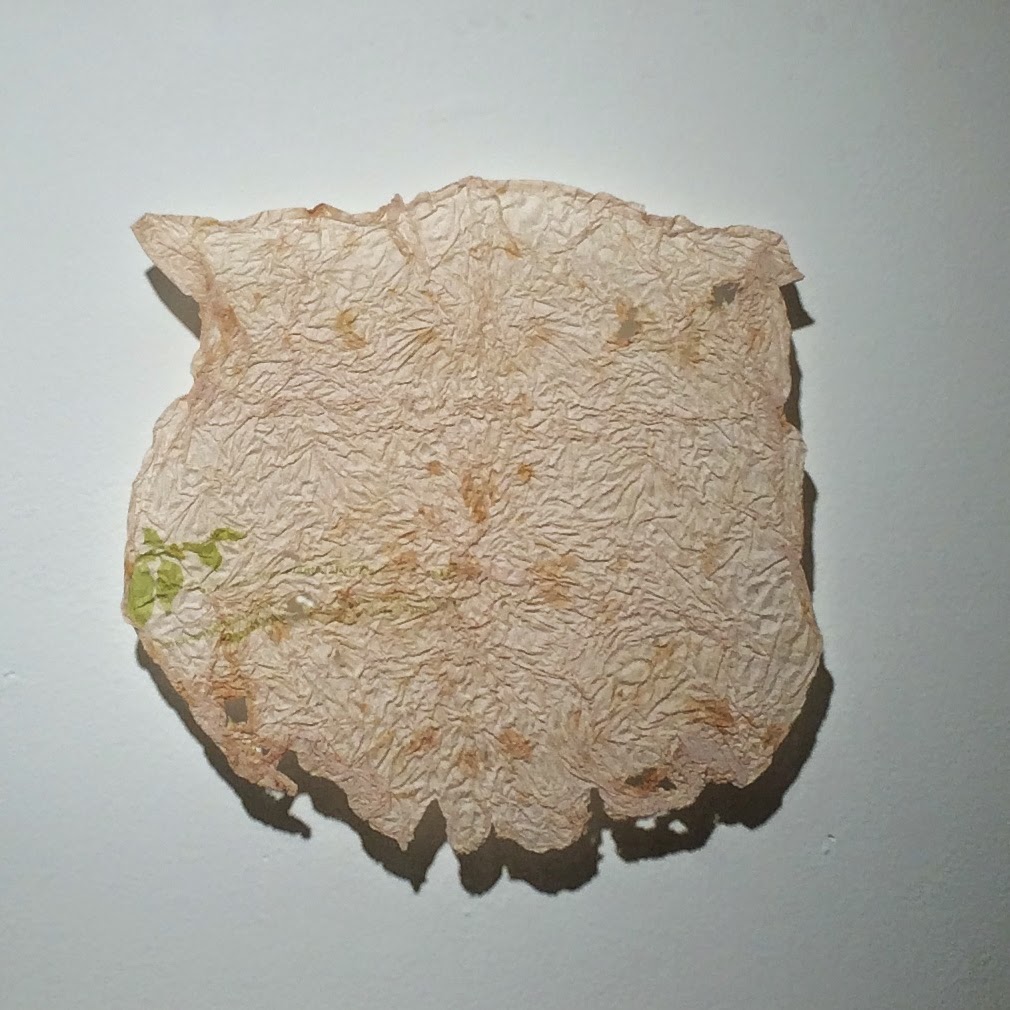Charles Gaines
Numbers and Trees, X1, #3, Audrey, 2014
acrylic sheet, acrylic paint, ink, foamboard
46 1/2 x 50 1/4 x 3 1/2 inches
Clarissa Tossin
Shared Napkin (Andrezza, Guilherme, Ludovic, and I), 2007
paper napkin, lipstick, grease, red wine, chocolate, tomato sauce, and coffee
11 1/2 x 16 1/4 inches
Clarissa Tossin
Shared Napkin (Louisa, Lindsay, and I), 2007
paper napkin and pomegranate
9 1/2 x 9 1/2 inches
Alise Spinella
I Hold the Line, 2014
charcoal, grease pencil, graphite, acrylic polymer on canvas
36 x 28 inches
Steve Roden
Gloppen = Open Glow, 2007
Four-color offset printed map
27 x 39 inches
The map, a representation of a surface largely uneven and virtually incomprehensible at any scale, charts a landscape, a body, a relation of parts. Seeing these works had me thinking about Vermeer's paintings that included maps in their backgrounds thereby suggesting a way to look at painting as map but also to think about a subject of exploration, one of great unknowns in Vermeer's time since so few had developed any sense of a world-image, certainly as we know it today from satellite photos and daily, global exchange. So, this show had me wondering, ultimately, how I was to think about the map-maker, the cartographer (the artist I'm assuming) rather than the the map as subject.











No comments:
Post a Comment